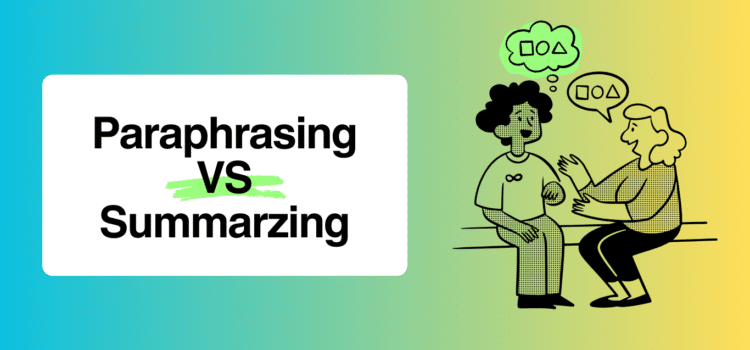
The English language has spread globally, especially with the internet making it accessible to almost everyone. Along with English come many rules and nuances, some of which are shared with other languages but not universally known. Paraphrasing and summarizing are two essential skills in writing, utilized since the earliest texts. Understanding these tools helps us convey ideas clearly and concisely.
Related Topic: How to Paraphrase a Paragraph: Strategies & Skills
Understanding Paraphrasing and Summarizing
Paraphrasing means expressing the meaning of a phrase or sentence using different words, aiming for greater clarity. Summarizing, on the other hand, involves making a brief statement of the main points of a written or oral account. Despite their similarities, these two skills have distinct differences that are crucial to understand for effective communication.
Paraphrasing
- Purpose: Achieve clarity without losing the original meaning.
- Usage: Keeps the content and context intact but presents it more straightforwardly.
- Method: Attributes the source to retain intended meaning, sometimes condenses the material.
- Importance: Every line of the text is given equal importance.
Example:
- Original Passage: Robert’s got a bad habit of smoking cigarettes. He finishes a pack almost every day.
- Paraphrase: Robert has got a smoking problem and being a chain smoker, he can finish a pack each day.
If you’re experiencing difficulties, you can always reword with AI, but you still have to read and edit the output to ensure the original text’s meaning hasn’t changed.
For more details on paraphrasing, check out our article on Paraphrasing Different from Summarizing.
Summarizing
- Purpose: Convey essential information briefly.
- Usage: Shorter than the original material, highlights crucial points.
- Method: Selective, omitting irrelevant ideas.
- Importance: Focuses on the main points of the text.
Example:
- Original Passage: Robert’s got a bad habit of smoking cigarettes. He finishes a pack almost every day.
- Summary: Robert smokes a pack a day.
For more summarizing tips, visit Summarizing and Paraphrasing Examples.
How to Differentiate Between Paraphrasing and Summarizing
Though similar, paraphrasing and summarizing serve different purposes:
- Summarizing: Focuses on brevity, providing enough information about a text in fewer words.
- Paraphrasing: Not concerned with length but rather with conveying the message in your own words.
Understanding the distinction helps improve writing quality and prevents confusion.
For a deeper dive into the differences, read our guide on What Does Paraphrase Mean?.
When to Paraphrase and When to Summarize
Knowing when to paraphrase and when to summarize is important. Use Paraphrasing when you want to explain something complex in simpler terms. Paraphrasing keeps the original meaning but changes the words. It’s useful for avoiding too many direct quotes. For example, use paraphrasing when you need to explain a detailed concept from a source.
Summarizing is ideal for giving a brief overview. Use it when you want to present the main points without all the details. Summarizing is shorter and more concise. It’s perfect for condensing long articles or chapters into a few sentences. For example, summarize when you need to give a quick idea of a lengthy text. This helps readers understand the overall message without getting bogged down by too much information.
Conclusion
Paraphrasing involves restating the original text, while summarizing presents crucial points concisely. Mastering these skills enhances communication and writing proficiency.
For more insights, explore our related articles:
- Why Paraphrasing is Important
- Paraphrasing Types in writing
- How to Avoid Plagiarism
- The difference between Quoting and Paraphrasing
- Paraphrasing Exercises with Answers


